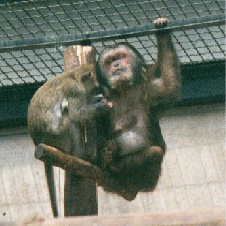This species has cheek pouches to carry food in while it forages. The average body mass for an adult male stumptailed macaque is around 7 kilograms, and for the females it is around 5 kilograms. This species has a dark brown pelage color, and the face is hairless and red in color. As from their name the stumptailed macaque has a relatively short tail.
RANGE:
The stumptailed macaque is found in the countries of Bangladesh, Bhutan, Burma, Cambodia, China, Laos, Thailand, and Vietnam. This species lives in tropical, monsoon, and subtropical evergreen broadleaf forests.
